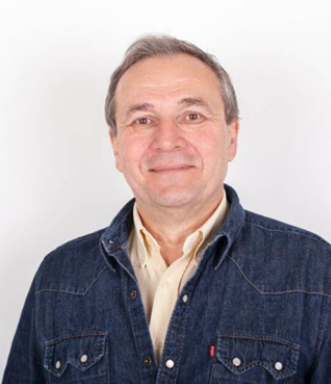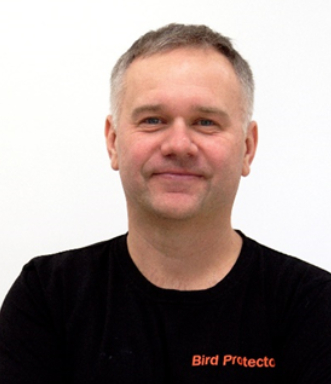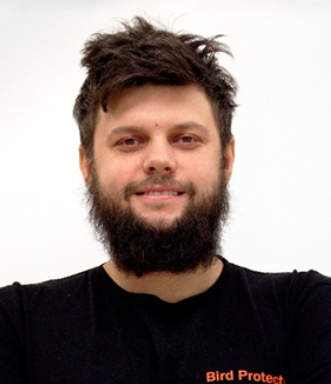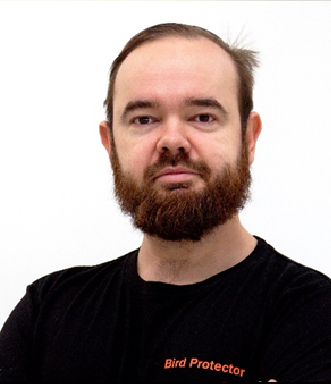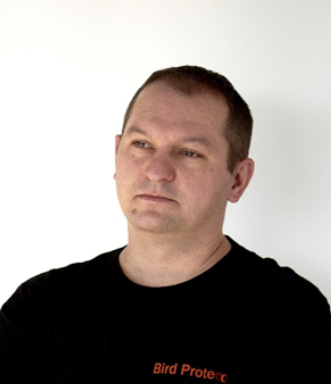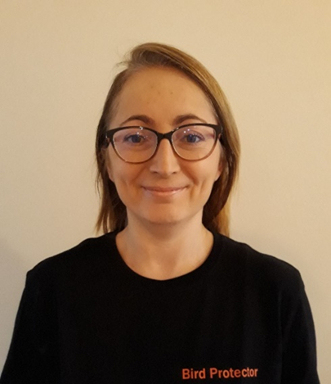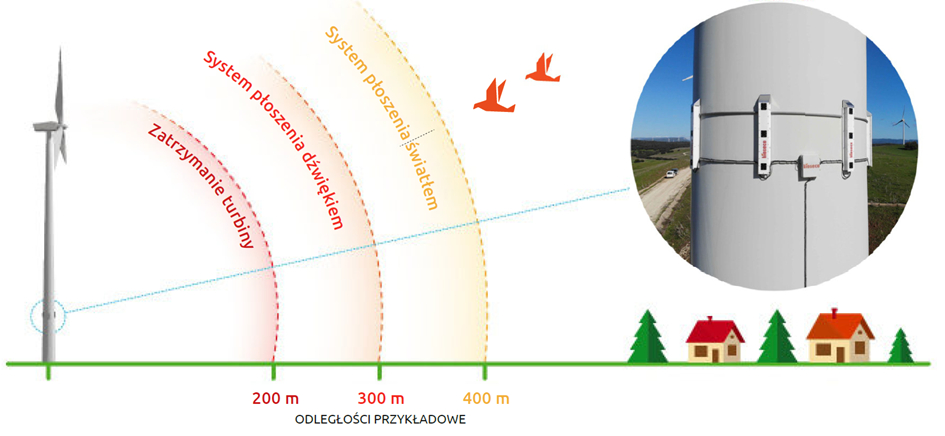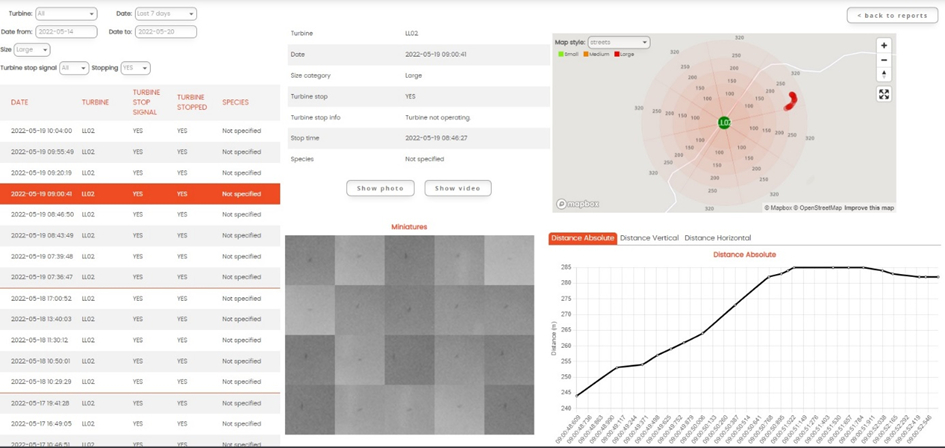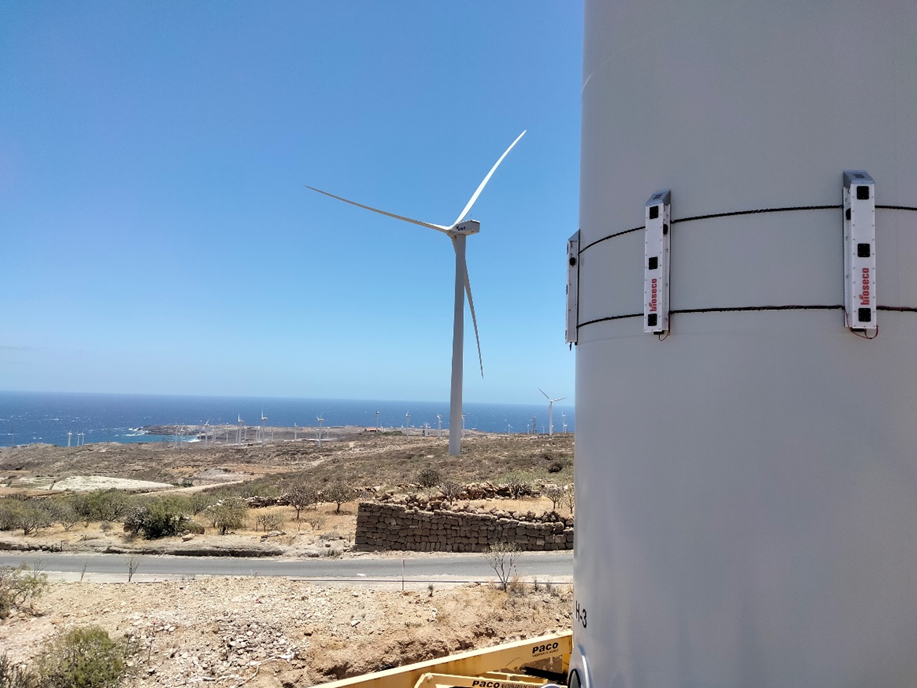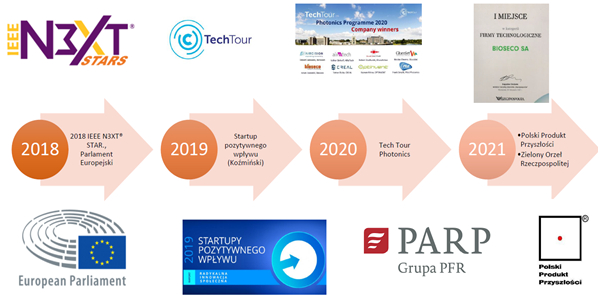MULTIREJESTRATOR PLUS

 Project title
Project title
‘Performance of R&D works leading to the implementation of a new solution – MULTIREJESTRATOR PLUS for monitoring and controlling the power system in terms of operational efficiency, life extension and optimisation of the impact on the environment of wind farms.’
 Name of Beneficiary/Beneficiaries
Name of Beneficiary/Beneficiaries
Bioseco S. A.
 Name of programme
Name of programme
Smart Growth Operational Programme
 Competition
Competition
PBSE Sector Research Programme
 Project value
Project value
PLN 4,067,612.07
 Funding value
Funding value
PLN 2,995,824.27
 Project delivery period
Project delivery period
from 01.09.2018 to 30.11.2021
Meet our team
Bioseco company was established in 2013 for the purpose of developing technologies which enable the sustainable development of modern industry. The company develops globally innovative equipment for autonomous monitoring and protection of avifauna in the airspace of wind farms and airports. The unique technology was developed by a team of scientists, engineers, ornithologists and wind energy experts.
Key members of our team:
professor Włodek Kulesza, R&D Project Manager
Professor at the Blekinge Institute of Technology (Sweden) with a distinguished research background in multisensor systems based on Internet of Things (IoT) technology and machine learning algorithms. Experienced in developing unique technologies dedicated to the environment, healthcare and science.
Adam Jaworski, Chief Executive Officer (CEO), role in the project: Managing Director
In the wind power industry until 2008. He led an interdisciplinary team of engineers and economists with a shared vision to establish clean power plants in Poland, which included the construction of a portfolio of 89.4 MW across 3 wind farms.
He brought to Bioseco the experience to identify the needs of wind farm operators. This allowed for the commercial success of the final outcome of the project.
Eng. Dawid Gradolewski, PhD, CTO, in the Senior R&D Developer project
Dawid is the author of the technological concept of the system under development and its key algorithms. He has also co-authored scientific articles developed as part of the project. He is responsible for the further development of the system in the company.
Eng. Damian Maciej Dziak, PhD, Head of Software, in Senior R&D Developer project
Damian is one of Bioseco’s lead developers, specialising in distributed computing and artificial intelligence systems. His main research work is dedicated to the customisation of modern systems and IoT technologies.
Damian Kaniecki, Head of Hardware, Embedded Systems Designer in the project
He is responsible for the development of the concept of mechanical system together with the design and programming of the dedicated electronics systems. It is currently carrying out the assembly, installation and maintenance of the system developed as part of the project. Expert in electronic engineering and embedded systems development at Bioseco since 2016.
Aleksandra Szurlej-Kielańska, Coordinator of Ornitological Data Monitoring and Audit in the project
She is responsible for verifying and creating functional assumptions for the system from an ornithological perspective, developing survey methodologies, supervising the work of ornithologists, coordinating environmental observations, drawing up conclusions and recommendations related to system development in terms of the effectiveness of bird detection and warning.
See the result of our work
The immediate purpose of our system is to protect birds in the areas of wind farms, with a particular focus on endangered species. The BPS system is able to detect, identify and locate a bird from a distance of up to 750 metres, which is the key to stop a wind turbine in good time, as the tips of it blade can rotate at speeds of up to 300 km/h. For this purpose, the system requires to process over 11 GB of data during every second of operation. This is made possible through the use of cutting-edge technologies, including the Internet of Things (IoT), machine learning and the concept of distributed computing, among others.
Vision systems, such as the BPS system developed by Bioseco, have recently been gaining popularity due to their high detection performance, active collision avoidance capability and a relatively low price. Positive testing and validation campaigns have permitted to implement the result of the project as a cheaper and more effective alternative to costly periodic and temporary standstills of wind farms. At the most sensitive sites, the wind turbine is preventively stopped for up to several months by decision of the environmental authorities. Replacing permanent shutdowns with the temporary shutdowns offered by the BPS system which are activated solely when the system detects a bird, allows to achieve a significant increase in green energy production. On average, one hour of downtime for a wind turbine means approximately the loss of 1MWh of production or approximately 75 euro. The system can stop the turbine for up to a total of one hour during high bird activity and for the remaining 23 hours the wind turbine can safely produce green energy.
In order to further minimise unnecessary downtime of the wind turbine, Bioseco has developed a solution based on stereovision which allows for the effective detection of birds, but also to locate them in the air around the wind turbine. Using stereoscopy also allows to determine the size of the detected object and to minimise false alarms. In consequence, the system is only going to trigger in the event of an imminent threat or if a bird of a certain size enters the area. The developed cascade system of deterrent allows to reduce the number of wind turbine stops to a minimum by optimising the use of methods warning birds of a potential collision, such as lights or sounds. In practice – within two seconds the system is able to estimate the distance of the detected bird and its size, and then later to automatically select an action to minimise the risk of collision, e.g. by activating the built-in light and/or sound warning system and the possibility to stop the turbine. A diagram of how the cascade deterrents work is shown in the image below (Figure 1).
Figure 1. System diagram with cascade deterrents
The following video illustrates the BPS principle
Video
The project was intensively supported by PGE EO SA, which made its wind farms “Lotnisko” and “Kisielice” available for the purposes of the project in cases where a prototype of the system was overdriven under real conditions. The tests verified the effectiveness of the system in terms of bird detection at different distances and the potential gains or losses in energy production were estimated by using active bird protection instead. Cases of false detections (false positives), such as the instances where the system would make a turbine stop on an object other than a bird, were also verified. A summary of the pilot can be viewed at: https://www.youtube.com/watch?v=to0mjt77pcI&t=25s
The prototype system has also been tested under real-world conditions, on wind turbines that have had previously recorded and confirmed cases of birds colliding with wind turbines.
- Cabeza Morena (Spain), 3 wind turbines fitted with BPS, the tests were carried out for a period of 12 months. During this time, the system detected a total of 42,503 birds out of which 4,674 were birds of prey. The system stopped the wind turbine to allow for a safe passage 1,445 times. No collisions were recorded.
- Lazaro (Spain), one wind turbine equipped with a BPS for a period of 12 months – the system detected 14,344 birds in that period, where 7,867 birds of prey were detected. The system stopped the turbine 1,767 times, allowing for a safe flight. No collisions were recorded.
The analysis of the collected data is permitted by a dedicated web application shown in Figure 2. The application shows thumbnail images of the recorded detections, sample flight paths estimated by the system, and video recorded in 4k resolution.
Figure 2. Screen from web application for customers to observe bird detections near the turbine
During the course of the works, a number of tests were carried out including long-term ornithological observations, tests using a drone and birds equipped with a GPS receiver. The full verification of the system including statistical analysis of the collected data allowed to confirm the effectiveness of the solution, and the results of the work have been published in reputable scientific journals. Tests carried out have shown that the system can fully effectively replace periodic preventive wind turbine stops, which lasting up to several months in certain parts of Europe. Subsequent articles are being prepared for publication:
- Gradolewski, D.; Dziak, D.; Martynov, M.; Kaniecki, D.; Szurlej-Kielanska, A.; Jaworski, A.; Kulesza, W.J. Comprehensive Bird Preservation at Wind Farms. Sensors 2021, 21, 267. https://doi.org/10.3390/s21010267
- Presentation for the 13th Wind Wildlife Research Meeting: Bioseco Bird Protection System (BPS) the tool for protection of birds at windfarms. Authors: Aleksandra Szurlej-Kielańska, Lucyna Pilacka, Dariusz Górecki, Dawid Gradolewski, Damian Dziak, Adam Jaworski, 01 - 04 December 2020;
- Aschwanden, J. & F. Liechti (2019): Test of the automatic bird detection system BPS on the test field of WindForS in the context of nature conservation research (NatForWINSENT). Schweizerische Vogelwarte, Sempach.Report on behalf of the Centre for Solar Energy and Hy-drogen Research Baden-Württemberg (ZSW)
Bioseco’s solution has been granted patent protection. A patent titled “SYSTEMS AND METHODS FOR DETECTING FLYING ANIMALS,” serving as the basis for the development of the BPS has already been granted in the United States, while the further proceedings are underway in Australia, Brazil, Canada, China, India, and before the European Patent Office (EPO). In addition, the company filed an application for the protection of the intellectual results of the project by the end of 2020 the United Kingdom Patent Office of Great Britain to ensure the protection of the intellectual results of the project for an invention, under the number 2018391.9, titled “A STEREOVISION METHOD AND SYSTEM.” Plans include further expansion of protecting patents protection in key wind energy markets.
After the research phase, the project has underwent validation including a series of studies and tests, which finally culminated in certification allowing for the commercial implementation of the system for use. The product has been awarded the CE Certificate of Conformity, which confirms the product’s compliance with standards PN-NE 61000-4-2, PN-EN 61000-4-4, PN-EN 61000-4-5, PN-EN 61000-4-6, PN-EN 61000-4-8, PN EN 55032. CE Certification is the process of assessing the conformity of a product’s performance with the requirements laid out in EU directives and constitutes a prerequisite for marketing authorisation in the European Economic Area.
The product has a high commercialisation potential and its sales continue to increase. In 2022 alone, sales of 60 systems have already been contracted, and the company is in the middle of sales discussions and negotiations with further interested customers. An exemplary system installation is presented in Figure 3.
Figure 3. BPS System at the Wind Farm in Tenerife
The BPS system has also been recognised internationally by gaining the prestigious title of IEEE Next Rising Star, as well as nationally by receiving the distinctions of the Green Eagle Award of Rzeczpospolita (1st place for technology companies) and the Polish Product of the Future. The company was also nominated for the ‘Teraz Polska’ 2022 emblem.
Figure 4. Distinctions and awards for our product
What problem does our project solve?
The magnitude of bird mortality at wind farms depends on a number of factors, including the location of the farm in relation to the habitats and home zones of individual species. Large birds are particularly vulnerable and the scale of their mortality is significant, in particular in situations where there are only a few or a dozen pairs of a particular bird species in an area. During the past quarter, a judgement passed in the US against a company operating over 100 wind farms across the country. It has been fined $1.8m, due to the fact that there have been 137 fatal collisions between American white-tailed eagles and golden eagles on 50 farms since 2012. In addition, the court ordered the operator to cover the costs of restoring the aforementioned species ($6.2 million), implement measures to minimise collisions between birds of prey and wind turbines within five years ($27 million) and set a fine for each subsequent collision ($29.6 thousand). It is estimated that over 500,000 birds, including protected and endangered birds are killed by wind farms every year.
The BPS system developed by Bioseco solves the problem of bird mortality and minimises Wind Turbine downtime due to temporary shutdowns. We solve this by actively stopping the wind turbine rotor when the bird is in the collision risk zone. The close cooperation between team members and ornithologists, the system is able to estimate the distance of the detected bird and its size, and then automatically select an action to minimise the risk of collision, such as activating the built-in light and/or sound warning system and the ability to stop the turbine.
Who is going to benefit from the project results?
The project results bring befits to wind farm operators, who can use the system as a tool to minimise collision risks and optimise green energy production. As the development of wind power progresses, environmental authorities are requiring operators to either temporarily shut down the turbine or use a detection system. The pilot studies allow to assume that the BPS system use allows to reduce shutdown times by approximately 50 percent compared to those imposed by the authority. This allows the investor to generate savings of approximately 15,000 euro each year.
The system shows a positive impact on the environment, through increased production of wind power by reducing turbine shutdowns, the use of a warning system (light and sound) prior to the turbine stopping.
An important aspect of the system’s operation involves the protection of birds, including endangered species at wind farm sites which is the primary interest of the local environmental protection authorities. We make green energy even greener.
Which aspect of the project implementation have we found to be the most challenging?
A number of technological challenges were defined under the project. The main challenge was to develop a solution allowing to detect a bird from the desired distance with high efficiency (min. 95%) with a low number of false detections and by bringing the wind turbine total standstill time to a minimum. The testing permitted to reduce false detections from 61% to 4% by introducing improved filters and software optimisation. In accordance with the assumptions made in the application, the team worked to develop an intelligent flight path analysis system which was achieved. Developing a solution to process big amounts of data in real time also proved to be a challenge. The system is dedicated mainly to endangered bird species, mostly large with a wingspan over 1.2 metres. A challenge was defined under the project, aiming to detect the distance parameter for birds with a wingspan greater than 150 cm by 200 m!
A significant formal challenge was to meet the formal requirements of an EU project that the company was implementing independently. In addition to the challenges of implementing the project in the era of the COVID-19 pandemic, another significant challenge involved being able to operate in the complex circumstances of a project funded under the EU funds. The NCRD project supervisors were extremely helpful in a smooth functioning of the project.
Our advice to other Applicants
Be brave in creating innovation! We believe that the only way to grow is to reach for new, out-of-the-box solutions. The support under EU funds allows companies, even companies with a short track record to develop their ideas. Both at the stage of working on the project and at the stage of accounting for it, it is worth to listen to the advice and guidance of NCRD Experts. Under ongoing projects – we should not be afraid of changes – due to the long lead times, adapting the project to changes in the market is an obligatory success factor.
Good luck!
